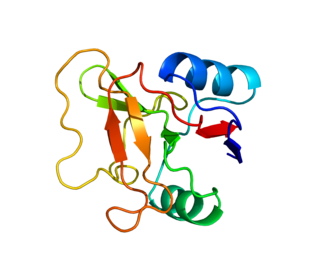| PODXL2 | |||||||||||||||||||||||||||||||||||||||||||||||||||
|---|---|---|---|---|---|---|---|---|---|---|---|---|---|---|---|---|---|---|---|---|---|---|---|---|---|---|---|---|---|---|---|---|---|---|---|---|---|---|---|---|---|---|---|---|---|---|---|---|---|---|---|
| Identifiers | |||||||||||||||||||||||||||||||||||||||||||||||||||
| Aliases | PODXL2 , EG, PODLX2, podocalyxin like 2 | ||||||||||||||||||||||||||||||||||||||||||||||||||
| External IDs | OMIM: 616627 MGI: 2442488 HomoloGene: 9254 GeneCards: PODXL2 | ||||||||||||||||||||||||||||||||||||||||||||||||||
| |||||||||||||||||||||||||||||||||||||||||||||||||||
| |||||||||||||||||||||||||||||||||||||||||||||||||||
| |||||||||||||||||||||||||||||||||||||||||||||||||||
| |||||||||||||||||||||||||||||||||||||||||||||||||||
| |||||||||||||||||||||||||||||||||||||||||||||||||||
| Wikidata | |||||||||||||||||||||||||||||||||||||||||||||||||||
| |||||||||||||||||||||||||||||||||||||||||||||||||||
Podocalyxin like 2 is a protein that in humans is encoded by the PODXL2 gene. [5]
| PODXL2 | |||||||||||||||||||||||||||||||||||||||||||||||||||
|---|---|---|---|---|---|---|---|---|---|---|---|---|---|---|---|---|---|---|---|---|---|---|---|---|---|---|---|---|---|---|---|---|---|---|---|---|---|---|---|---|---|---|---|---|---|---|---|---|---|---|---|
| Identifiers | |||||||||||||||||||||||||||||||||||||||||||||||||||
| Aliases | PODXL2 , EG, PODLX2, podocalyxin like 2 | ||||||||||||||||||||||||||||||||||||||||||||||||||
| External IDs | OMIM: 616627 MGI: 2442488 HomoloGene: 9254 GeneCards: PODXL2 | ||||||||||||||||||||||||||||||||||||||||||||||||||
| |||||||||||||||||||||||||||||||||||||||||||||||||||
| |||||||||||||||||||||||||||||||||||||||||||||||||||
| |||||||||||||||||||||||||||||||||||||||||||||||||||
| |||||||||||||||||||||||||||||||||||||||||||||||||||
| |||||||||||||||||||||||||||||||||||||||||||||||||||
| Wikidata | |||||||||||||||||||||||||||||||||||||||||||||||||||
| |||||||||||||||||||||||||||||||||||||||||||||||||||
Podocalyxin like 2 is a protein that in humans is encoded by the PODXL2 gene. [5]
This gene is a member of the CD34 family of cell surface transmembrane proteins, which are characterized by an N-terminal extracellular mucin domain, globular and stalk domains, a single pass transmembrane region, and a charged cytoplasmic tail. The encoded protein is a ligand for vascular selectins. [provided by RefSeq, Oct 2012].
Acts as a ligand for vascular selectins. Mediates rapid rolling of leukocytes over vascular surfaces through high affinity divalent cation-dependent interactions with E-, P- and L-selectins

L-selectin, also known as CD62L, is a cell adhesion molecule found on the cell surface of leukocytes, and the blastocyst. It is coded for in the human by the SELL gene. L-selectin belongs to the selectin family of proteins, which recognize sialylated carbohydrate groups containing a Sialyl LewisX (sLeX) determinant. L-selectin plays an important role in both the innate and adaptive immune responses by facilitating leukocyte-endothelial cell adhesion events. These tethering interactions are essential for the trafficking of monocytes and neutrophils into inflamed tissue as well as the homing of lymphocytes to secondary lymphoid organs. L-selectin is also expressed by lymphoid primed hematopoietic stem cells and may participate in the migration of these stem cells to the primary lymphoid organs. In addition to its function in the immune response, L-selectin is expressed on embryonic cells and facilitates the attachment of the blastocyst to the endometrial endothelium during human embryo implantation.

Cadherin EGF LAG seven-pass G-type receptor 2 is a protein that in humans is encoded by the CELSR2 gene.

C-C chemokine receptor type 4 is a protein that in humans is encoded by the CCR4 gene. CCR4 has also recently been designated CD194.

Trace amine-associated receptor 9 is a protein that in humans is encoded by the TAAR9 gene.

Podocalyxin-like protein 1 is a protein that in humans is encoded by the PODXL gene.

Alpha-(1,3)-fucosyltransferase is an enzyme that in humans is encoded by the FUT7 gene.

Olfactory receptor 52R1 is a protein that in humans is encoded by the OR52R1 gene.

Olfactory receptor 5P3 is a protein that in humans is encoded by the OR5P3 gene.

Olfactory receptor 10J5 is a protein that in humans is encoded by the OR10J5 gene.

Olfactory receptor 9A2 is a protein that in humans is encoded by the OR9A2 gene.

Olfactory receptor 8H1 is a protein that in humans is encoded by the OR8H1 gene.

Olfactory receptor 52N2 is a protein that in humans is encoded by the OR52N2 gene.

Olfactory receptor 56A3 is a protein that in humans is encoded by the OR56A3 gene.

Olfactory receptor 4F6 is a protein that in humans is encoded by the OR4F6 gene.

Disintegrin and metalloproteinase domain-containing protein 28 is an enzyme that in humans is encoded by the ADAM28 gene.

Tumor necrosis factor (ligand) superfamily, member 12-member 13, also known as TNFSF12-TNFSF13, is a human gene.

Tyrosine kinase with immunoglobulin-like and EGF-like domains 1 also known as TIE1 is an angiopoietin receptor which in humans is encoded by the TIE1 gene.

Sarcoglycan zeta also known as SGCZ is a protein which in humans is encoded by the SGCZ gene.

Solute carrier family 17 member 9 is a protein that in humans is encoded by the SLC17A9 gene.

Tetraspanin 9 is a protein that in humans is encoded by the TSPAN9 gene.
This article incorporates text from the United States National Library of Medicine, which is in the public domain.